
I reached Inverness after a 3 ½ hour train ride north from Edinburgh. Inverness is a much less dramatic city than Edinburgh, relatively flat, lying along the banks of the River Ness (which empties Loch Ness).
You see quite a number of villages and towns in Scotland that begin with ‘Inver’, because in Gaelic ‘Inver’ means ‘the mouth of’. Inverness is ‘the mouth of the (River) Ness’. Others sharing this prefix include Inversnaid and Inverarnan, along the West Highlands Way, where those rivers empty into Loch Lomond.
The train ride passes through the Highlands on the way north (where I shall soon go to hike the West Highlands Way), the ‘Highlands’, of which Robert Burns wrote so eloquently in the Scottish dialect:
“My heart’s in the Highlands, my heart is not here. My heart’s in the Highlands, a-chasing the deer; Chasing the wild-deer, and following the roe, My heart’s in the Highlands wherever I go.”
We often only see little snippets of his poetry. I took time to find an iBook of his collected poems, which is free as it is now in the public domain. Not all of it is compelling, but bits are exquisite. He only lived to 38 years old, perhaps because he went overboard on ‘following the roe’ so to speak. He wrote some memorable songs (who has not sung some verses of Auld Lang Syne on New Year’s Eve?) and bits of poetry. Here are a few of the best lines:
“O, wad some Power the giftie gie us
To see oursels as others see us!
It wad frae monie a blunder free us,
An’ foolish notion.”
“Auld Nature swears, the lovely dears
Her noblest work she classes, O:
Her prentice han’ she try’d on man,
An’ then she made the lasses, O.”
Last verse of “To a Mouse, on Turning Her Up in Her Nest with the Plough, November, 1785”:
“The best laid schemes o’ Mice an’ Men,
Gang aft agley.
An’ lea’e us nought but grief an’ pain,
For promis’d joy!”
Spoken in Scottish dialect
Auld Lang Syne
Though often credited to Burns, Burns himself called this an traditional song he had learned from an old man (and perhaps enlarged upon). Only the first two verses are the most commonly sung. Auld Lang Syne means (loosely): ‘days gone by’
“Should auld acquaintance be forgot,
And never brought to mind?
Should auld acquaintance be forgot,
And auld lang syne!
Chorus.—For auld lang syne, my dear,
For auld lang syne.
We’ll tak a cup o’ kindness yet,
For auld lang syne.
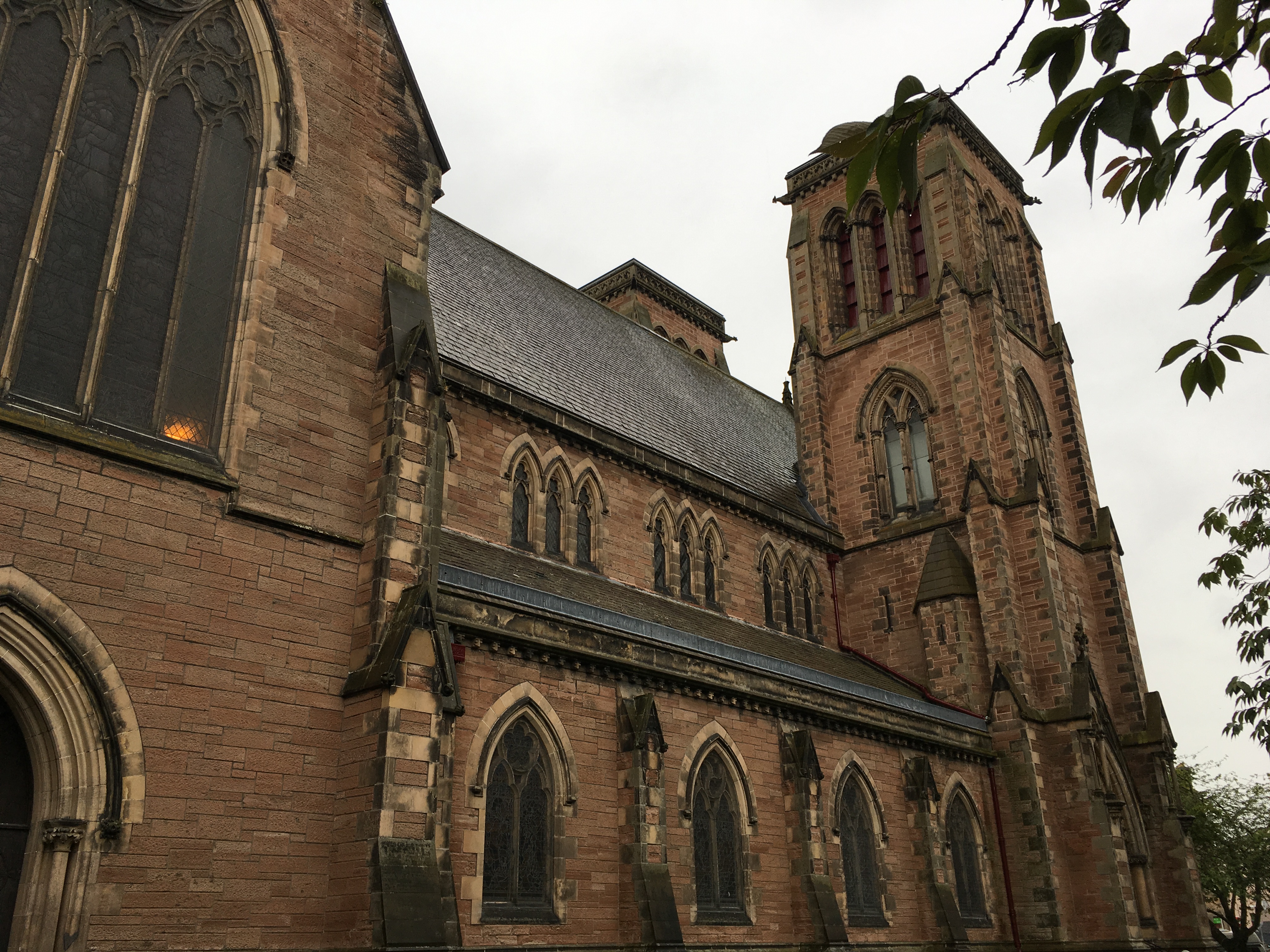
Saint Andrew’s Scottish Episcopal Cathedral. The bells can be heard all through town.

I saw more red hair in Scotland than in Ireland, but that could be a fluke. Ireland has 10% red hair, Scotland is only about 6%, whereas the worldwide prevalence is only 1-2%. Red hair is associated with freckles, and the reduced or inability to tan.

This is Sharon, met on the West Highlands Trail. She has green eyes, which she said corresponds with being able to tan a little, whereas blue eyes is the most pure form, where no tanning is possible. Neither of her parents had red hair. This is possible because the red hair gene is recessive, so both parents must have it. About 38% of people in Ireland have one or more red hair genes.
Sharon has one of the lighter variations of the expression of the red hair gene. It was kind of her to allow this picture while out on the trail with ‘hiking hair’.

Near my apartment is this memorial to a courageous woman. She could not ignore the plight of these people she knew, so she helped them. Then, she paid with her life.

I’ve been enjoying biking in many cities, and so I signed up for a United Kingdom (Great Britain) program called Bike & Go. You pay about $15 a year, and then about $5 a day to rent bikes like this at any train station. Since the local going rate to rent a bike at a bike shop was $29 a day, as much as to rent a car, it sounded worthwhile even for just a few days. You get a 7 speed fat tire bike, pretty heavy and sturdy, with a lock cable and racks. So I headed off to explore the area around Inverness.
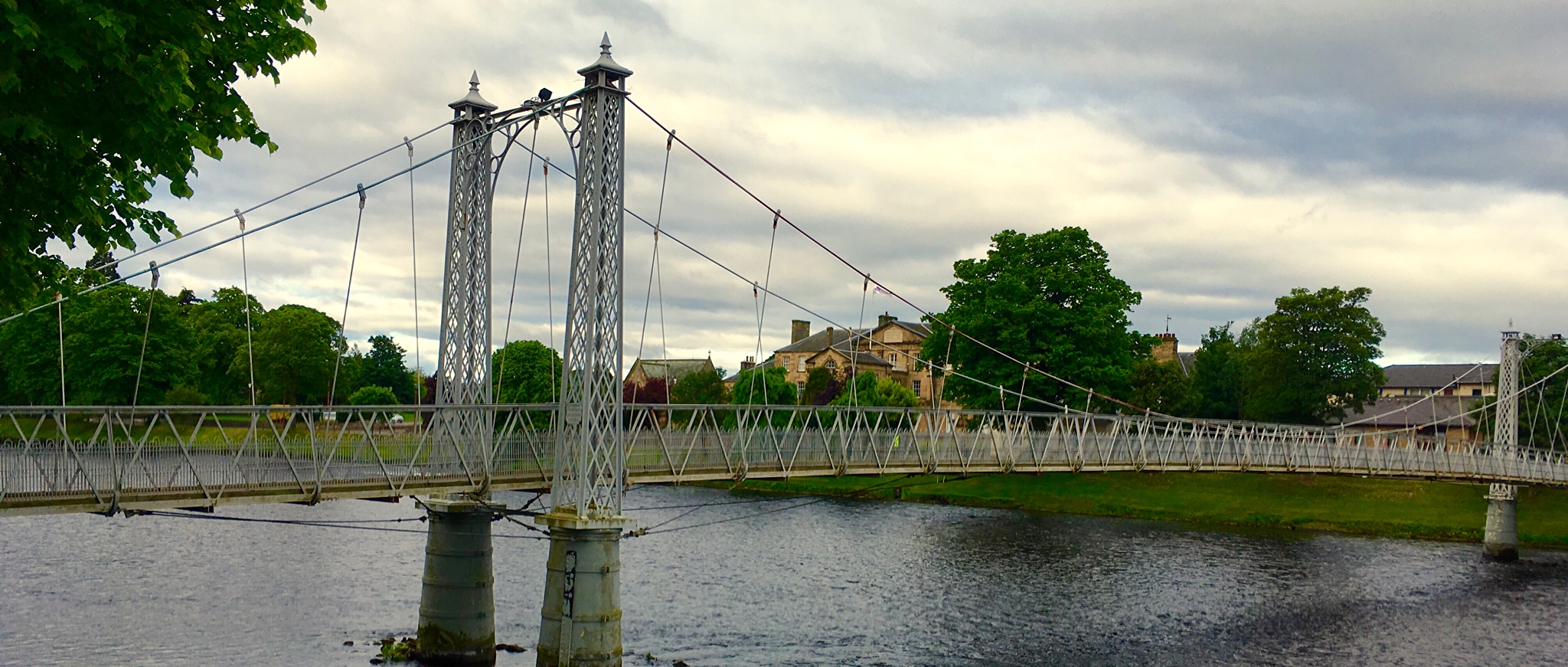
Riding upstream along the River Ness, I passed this quaint pedestrian suspension bridge. You must walk your bike crossing it, which makes sense, as it sways beneath you! But this time, I continued up the left bank.
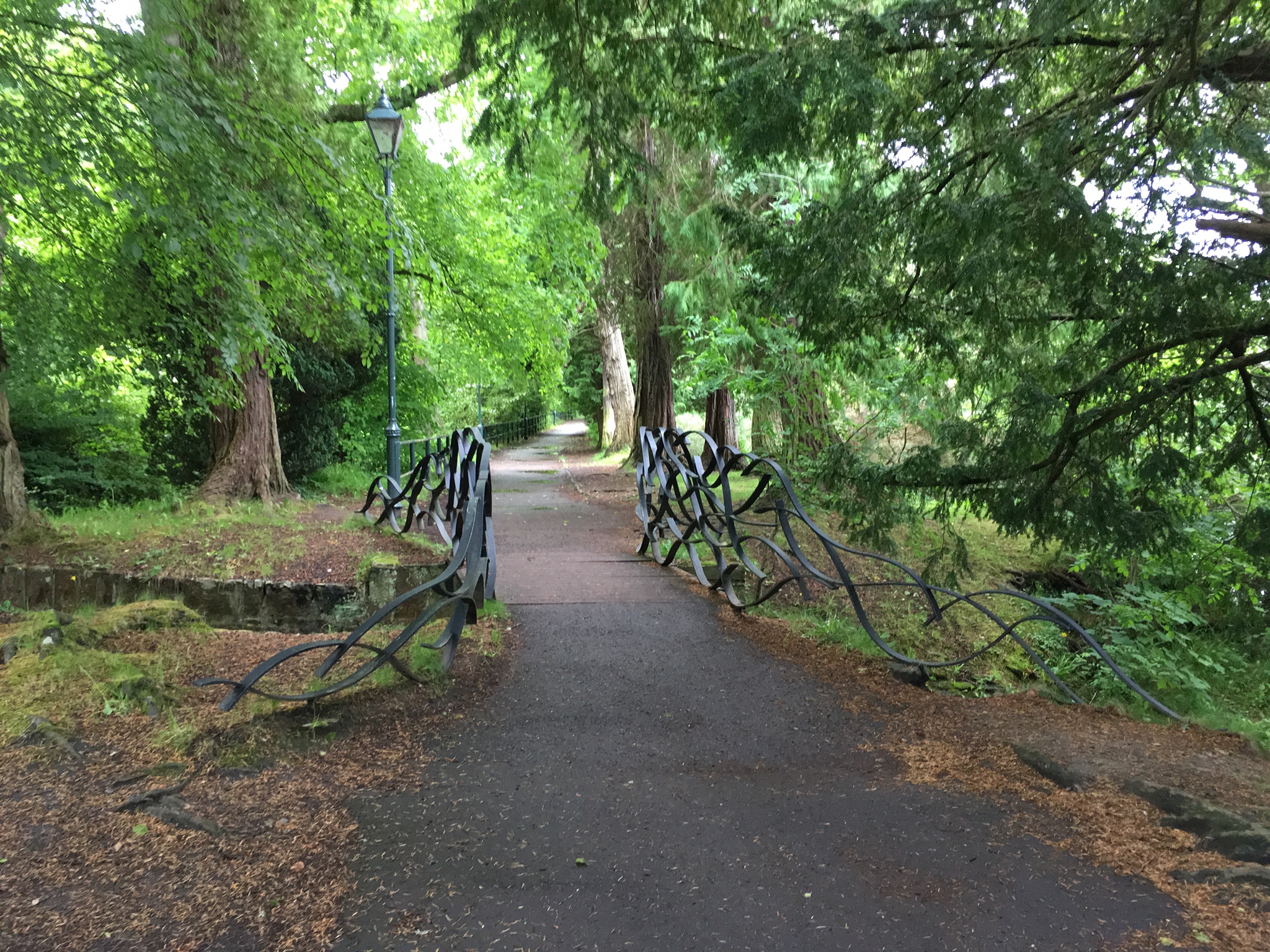
There are some very nice walking/biking paths along the river.

Crossing this bridge takes you out onto an island in the middle of River Ness.

An old man was slinging a tennis ball out into the River Ness for his dog to fetch. It was a bit cool. He said “Up here, we call 10°C (50°F) a heat wave.” That’s about what it was. But, as the Norwegians say “There are no weather problems. Only clothing problems.”
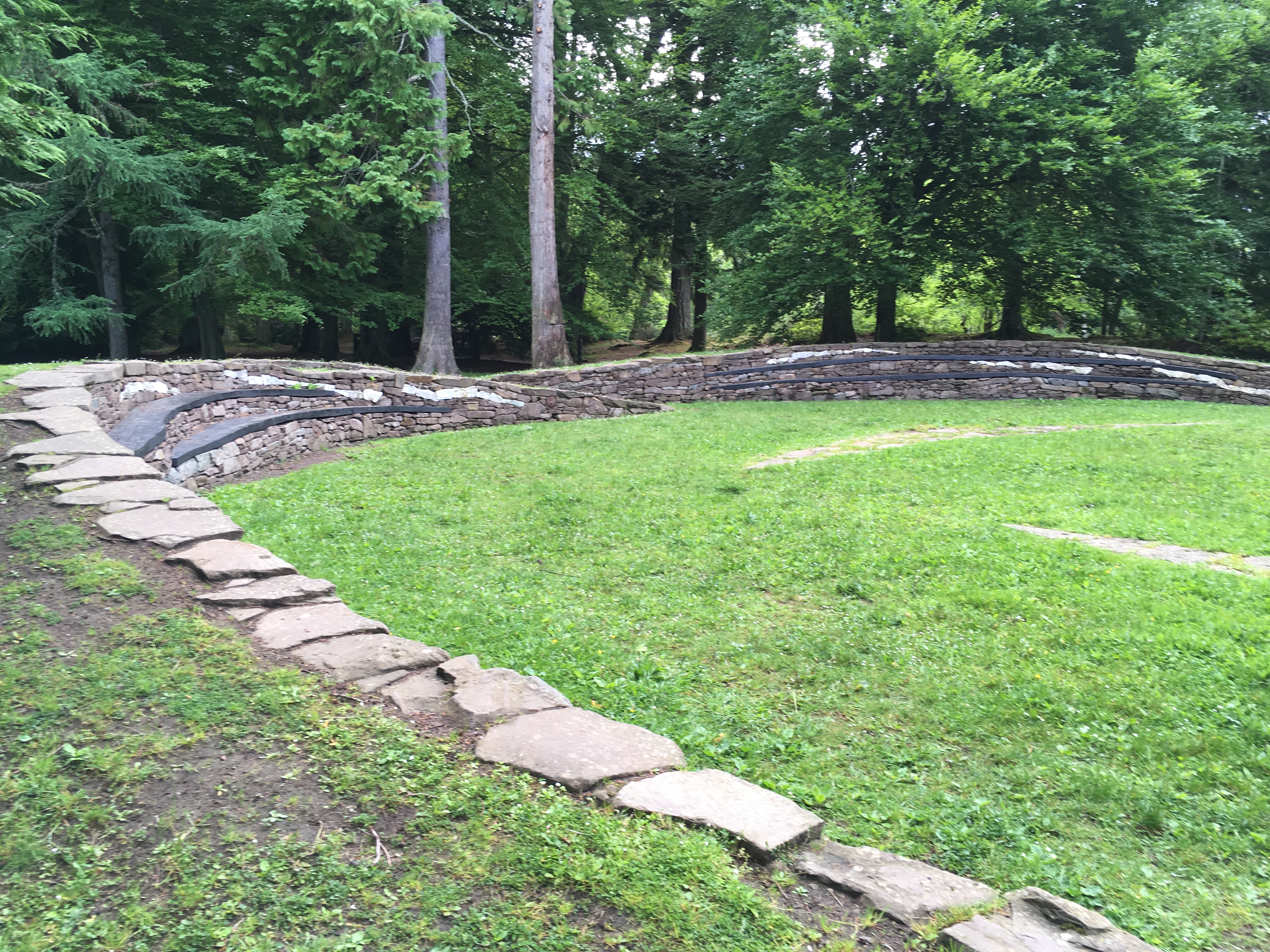
I suppose this is an area for group gatherings or performances.

There are many rhododendrons here, they like the climate.

After awhile, the path climbs up to the towpath along the 22 mile long Caledonian Canal, finished in 1821 to provide a safer way to transport goods than out in the rough open sea passage. The irony was that by the time it was completed, ships had gotten bigger, and did not need it. These days, it mostly carries tourist boats and yachts.

There is much yellow gorse along the canal. There are ‘tow paths’ on each side,
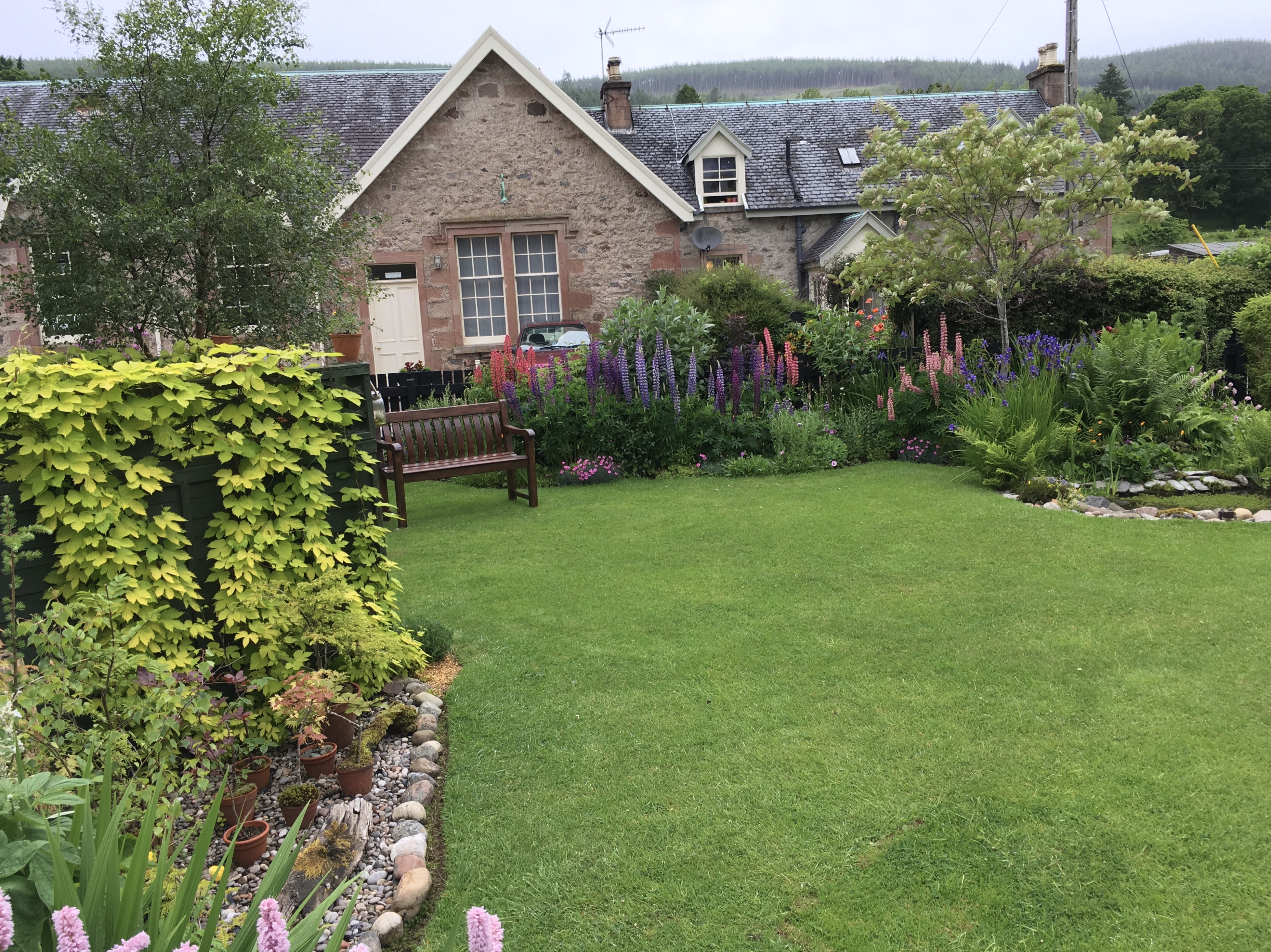
A local style home along the canal, with TV antenna and satellite dish added, plus lots of flowers.

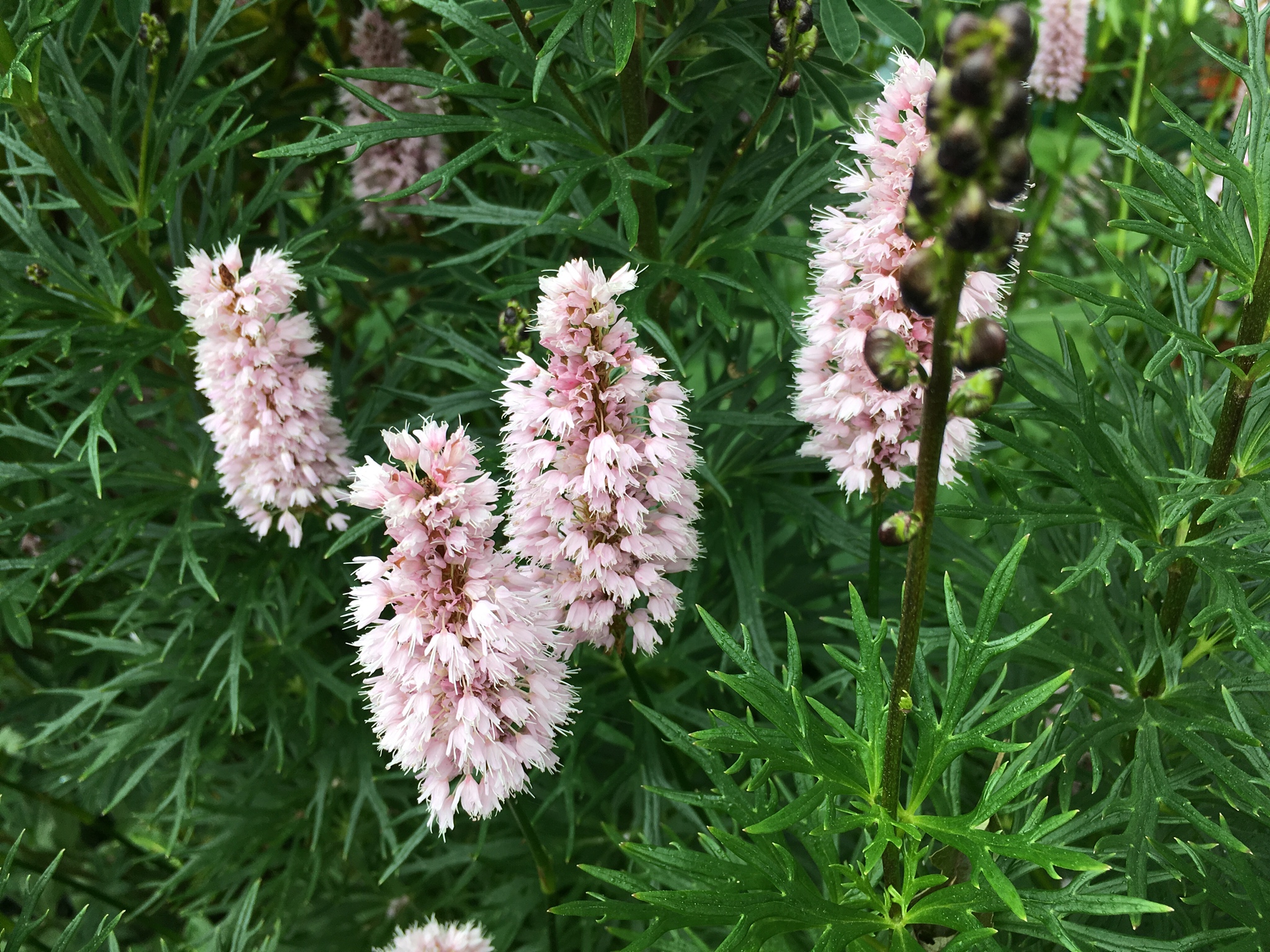
“Shall not loveliness be loved forever!”

The Great Glen Way is a 76 mile walk from Fort William to Inverness. I biked part of it from the Inverness end another day.

The island path was so pretty I biked there several times. Today I went much further.
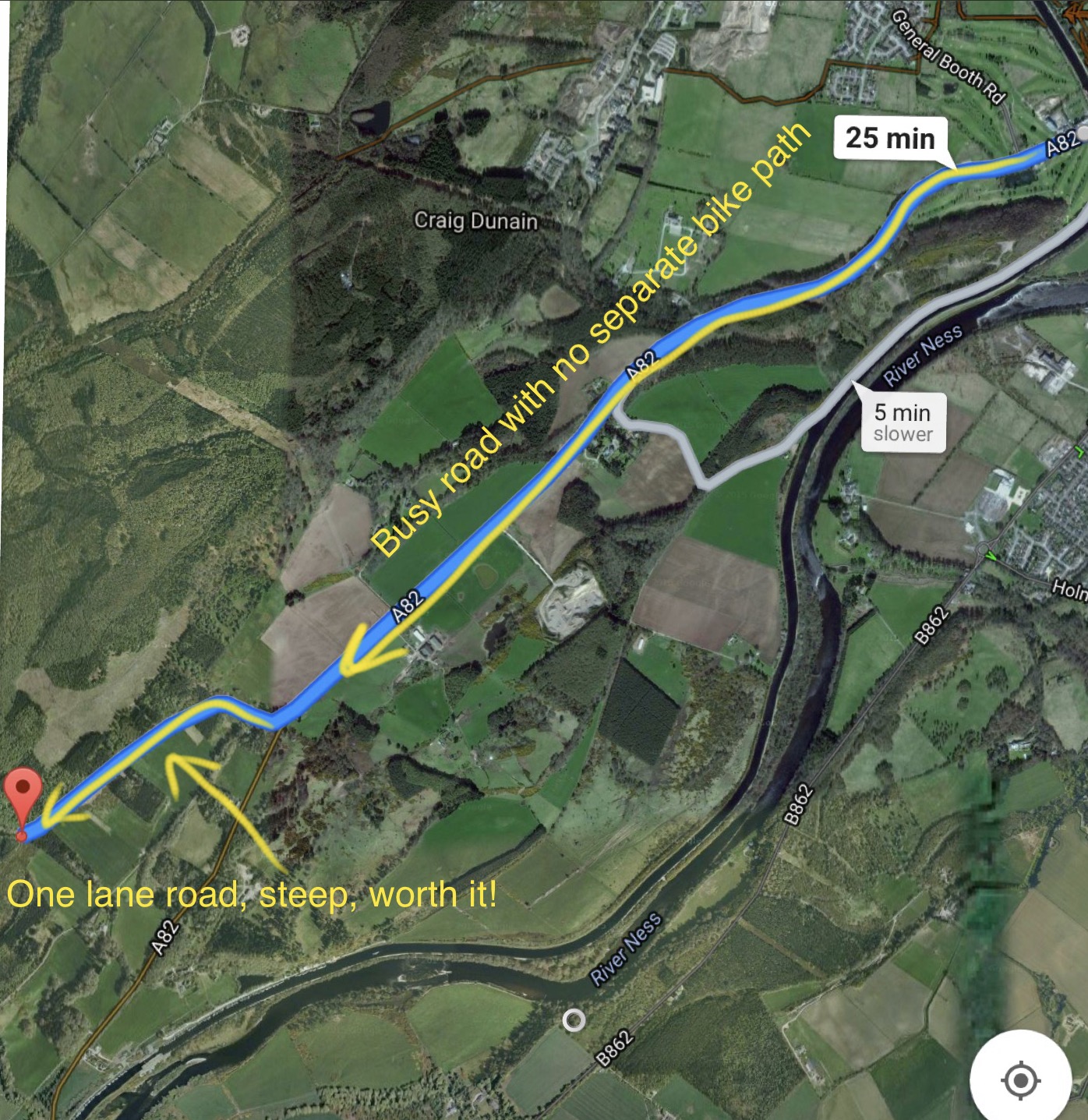
A82 was unavoidable. Fast two lane road with no separate bike path. So when I came to a fork in the road, as Yogi Berra suggested, I took it:
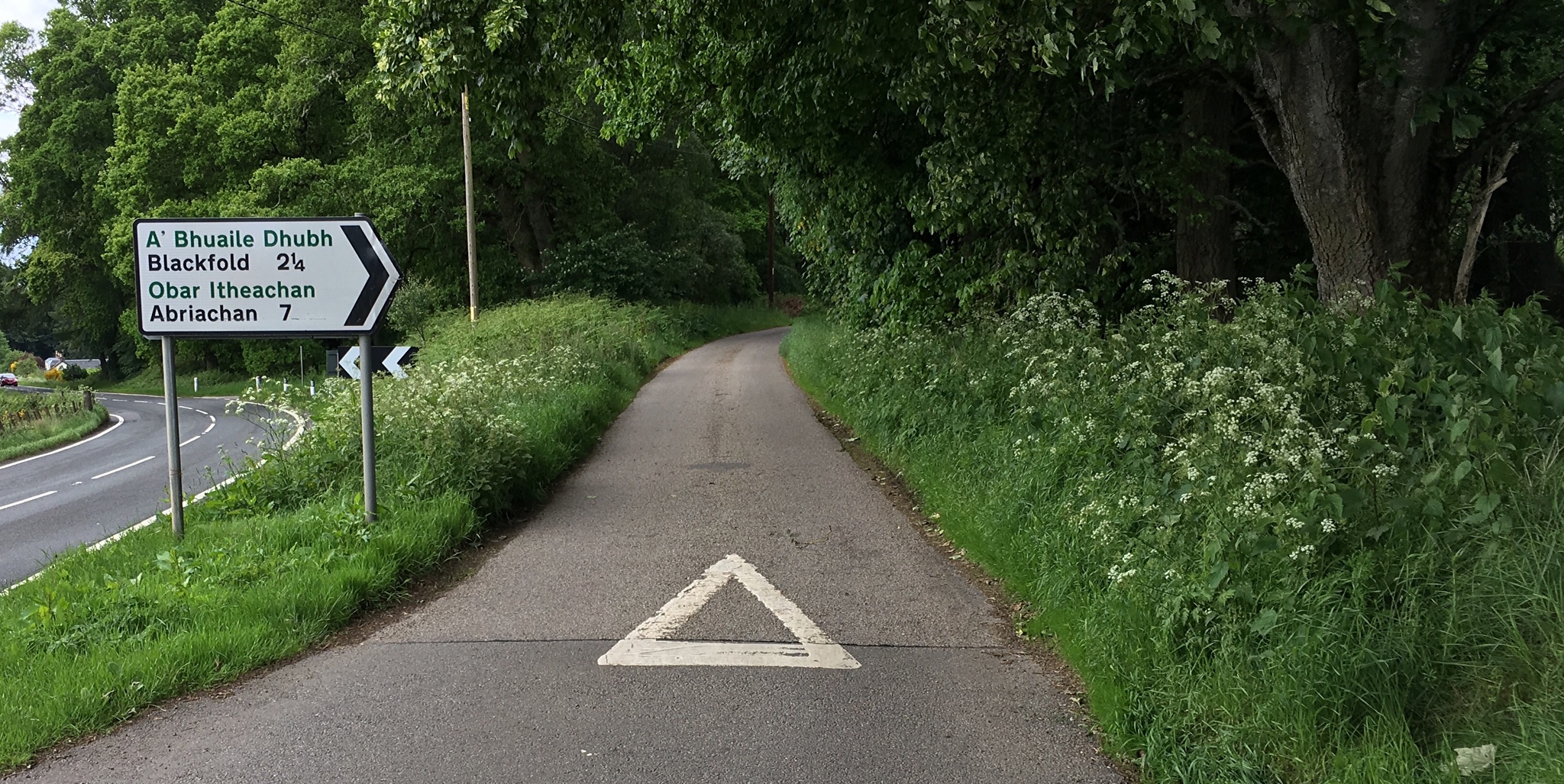
Up a steep, one lane road. Never saw a car or a person the whole way.
 The view from up there was dramatic
The view from up there was dramatic
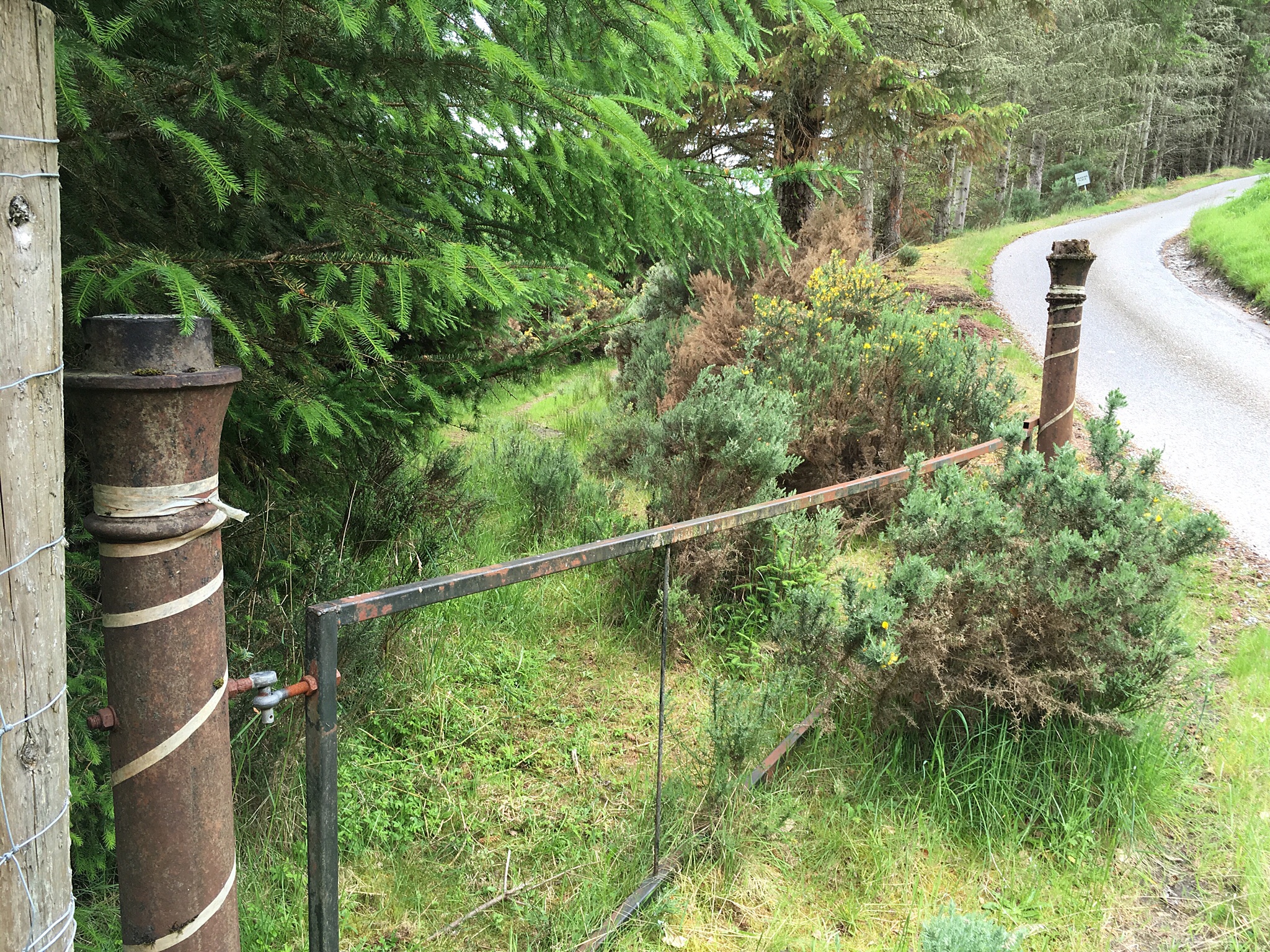
Then, Google Map directed me onto this ‘road’. Hmm. Perhaps an abandoned dirt road?
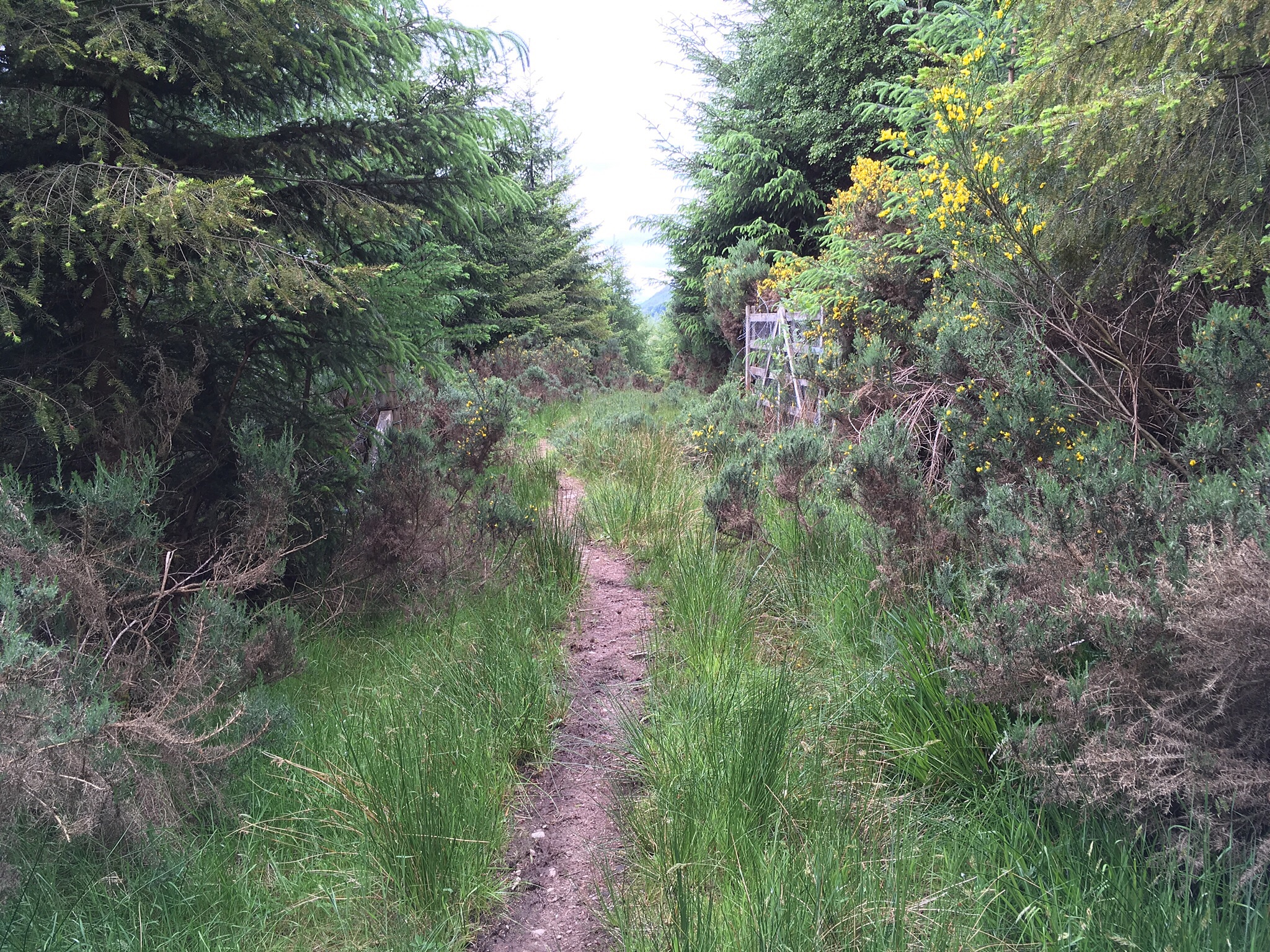
My kind of path! I like it. Nobody out here, I better not break a leg.
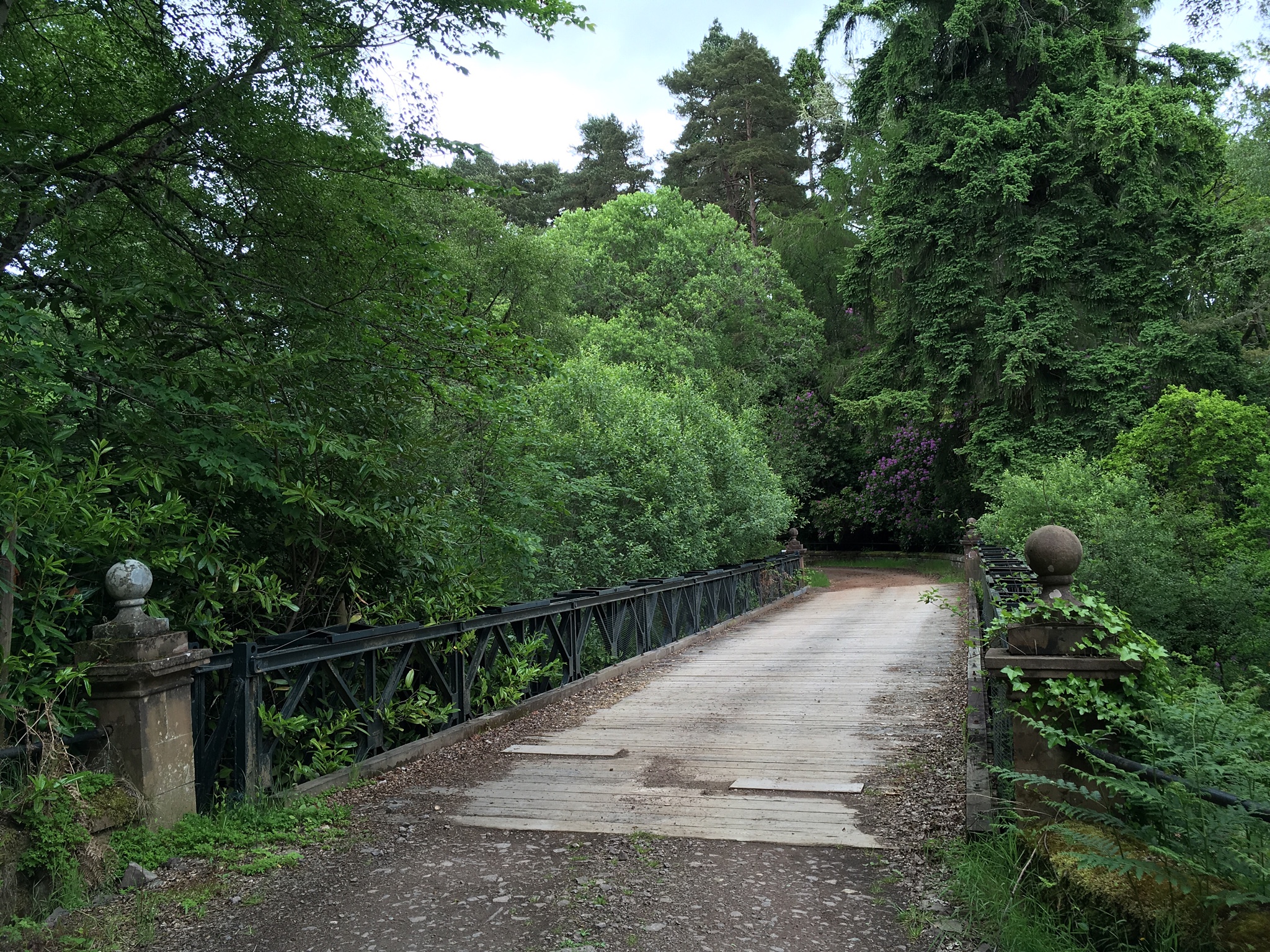
Further down, I go through some old growth forest with huge trees, and come out on an old road.

There are rhododendrons growing wild on the hillside, I’ve never seen anything like this!
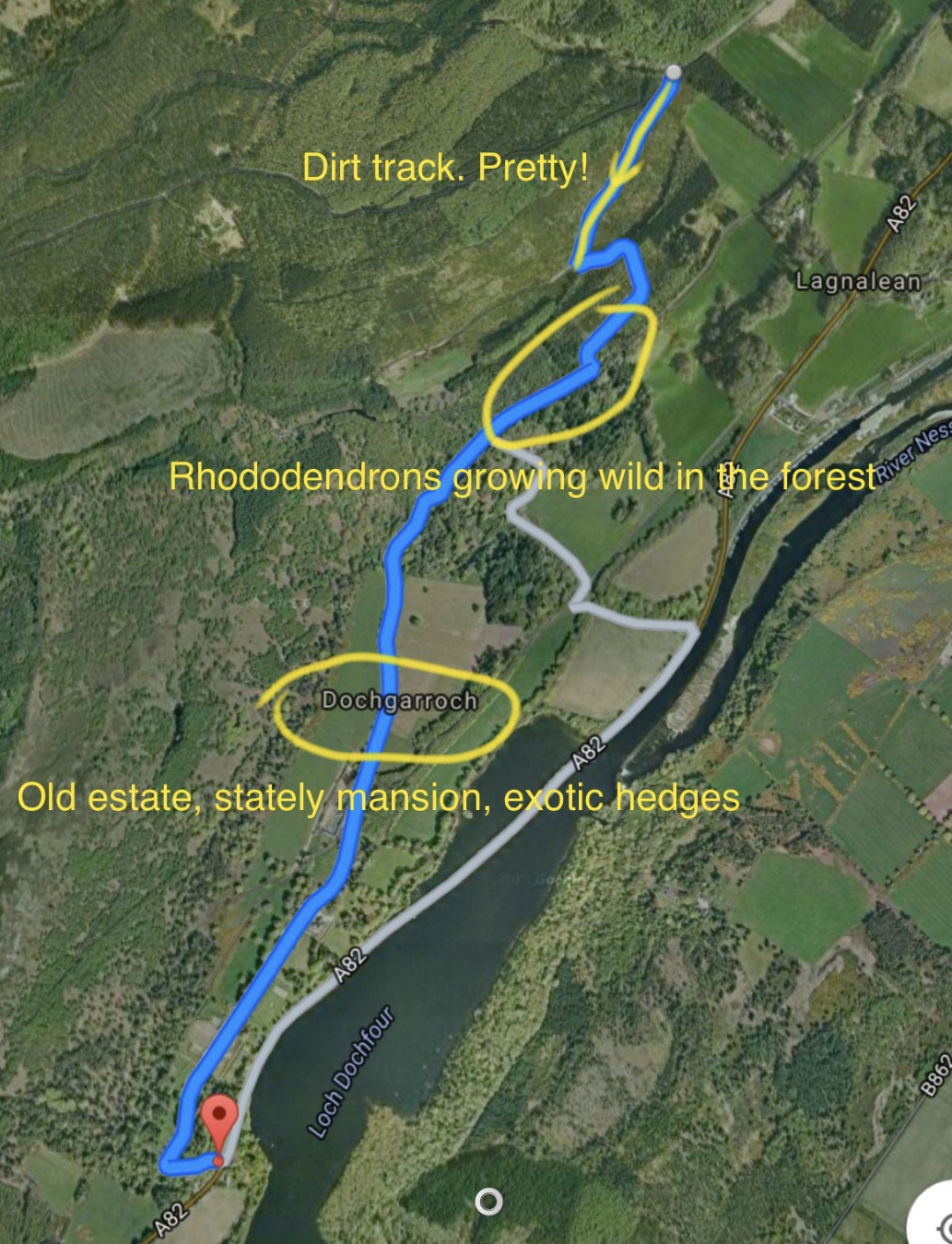
It seems I have stumbled on the Old Dochgarroch estate, land granted to a family for service back in the 1400s.

The rather old manor house down near the Loch.

Acres of sculptured hedges. Most unusual!
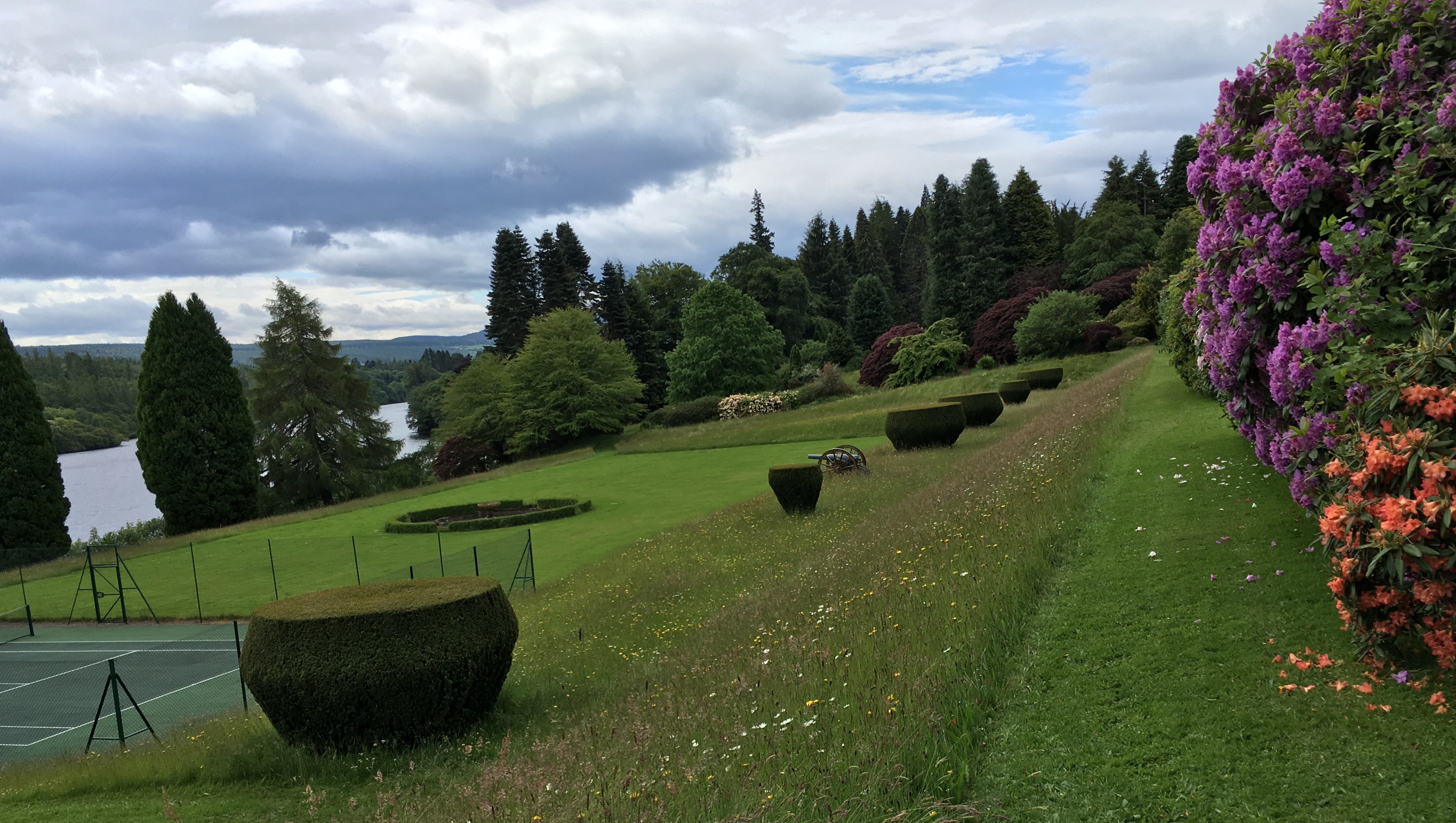

The Old Bonna Church

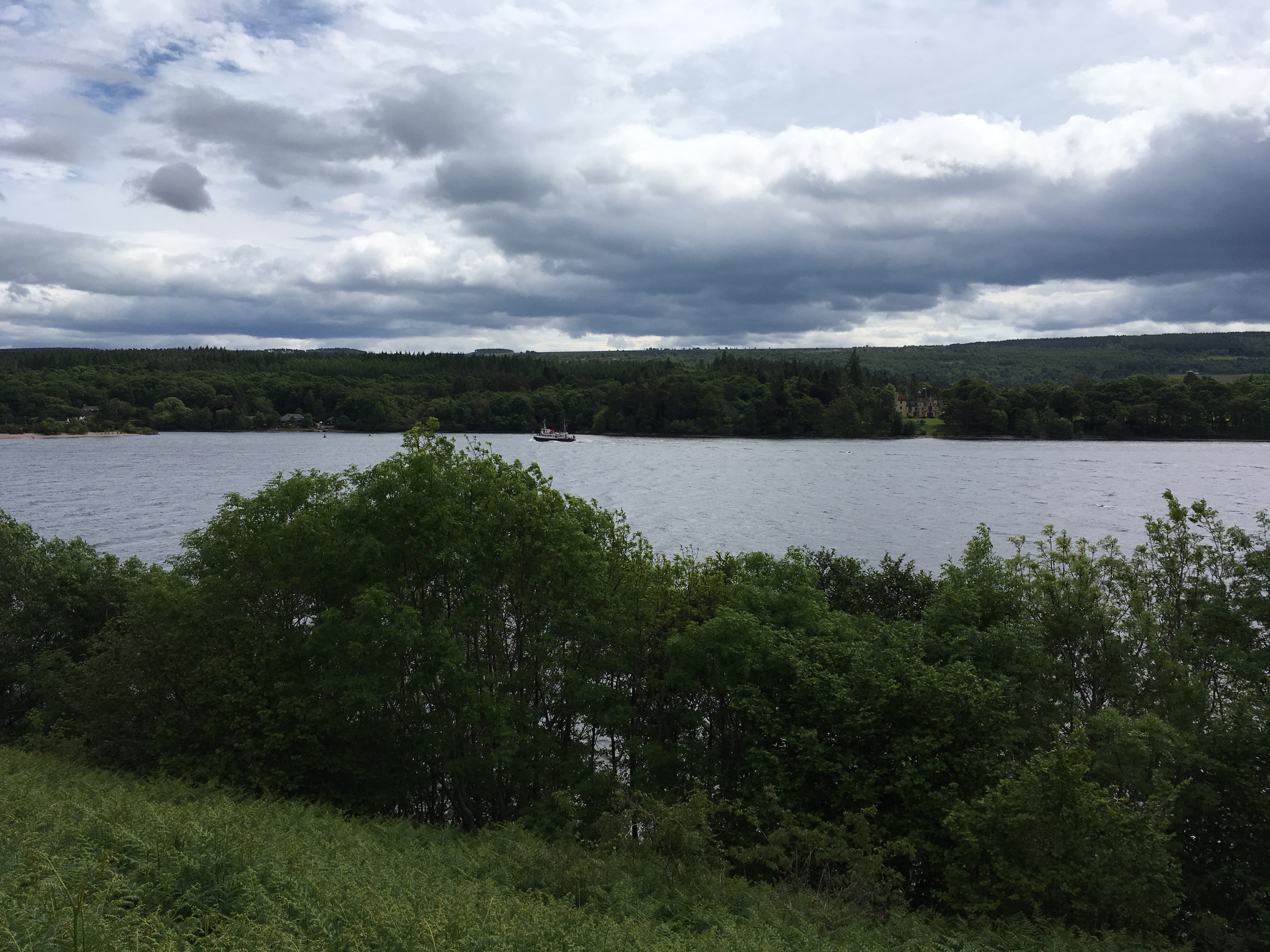
And Loch Ness, a rather big lake! Then, back via A82 to the Caledonian Canal tow path and home.
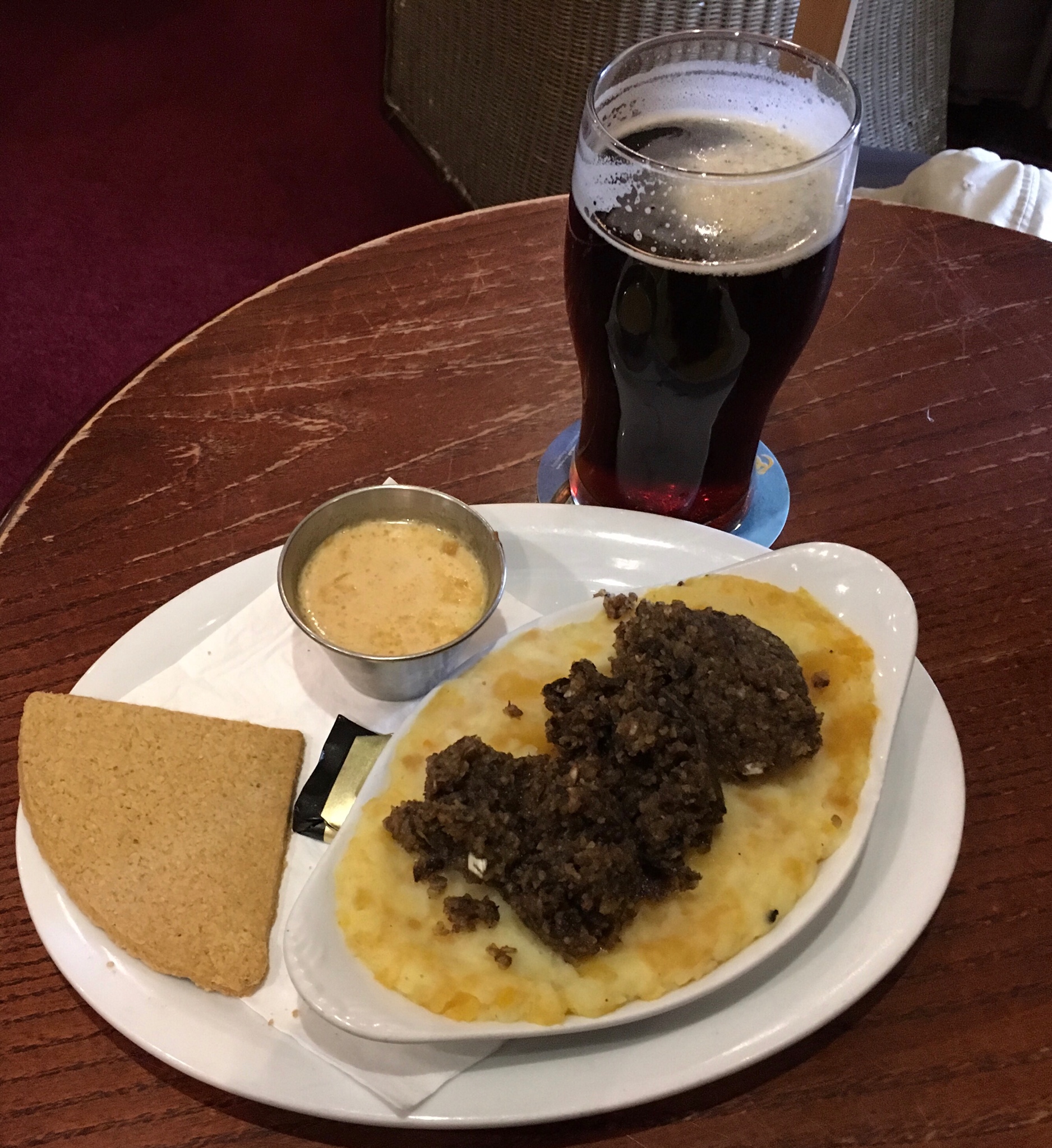
My grandchildren teased me and urged me to eat haggis (which they would certainly not do!). After some checking with locals, I decided it was worth a try. I ordered ‘Whiskey Haggis’ with clapshot (a traditional dish made of mashed Swedish Turnips and potatoes). The quarter oval is an oat cake. The whiskey part is the cream sauce in the small dish. I added a pint of dark Scottish ale. The verdict: good haggis is yummy, as was the clapshot. Glad I tried it. According to the 2001 English edition of the Larousse Gastronomique: “Although its description is not immediately appealing, haggis has an excellent nutty texture and delicious savoury flavour”. I couldn’t have put it better. Don’t read about it, try it.
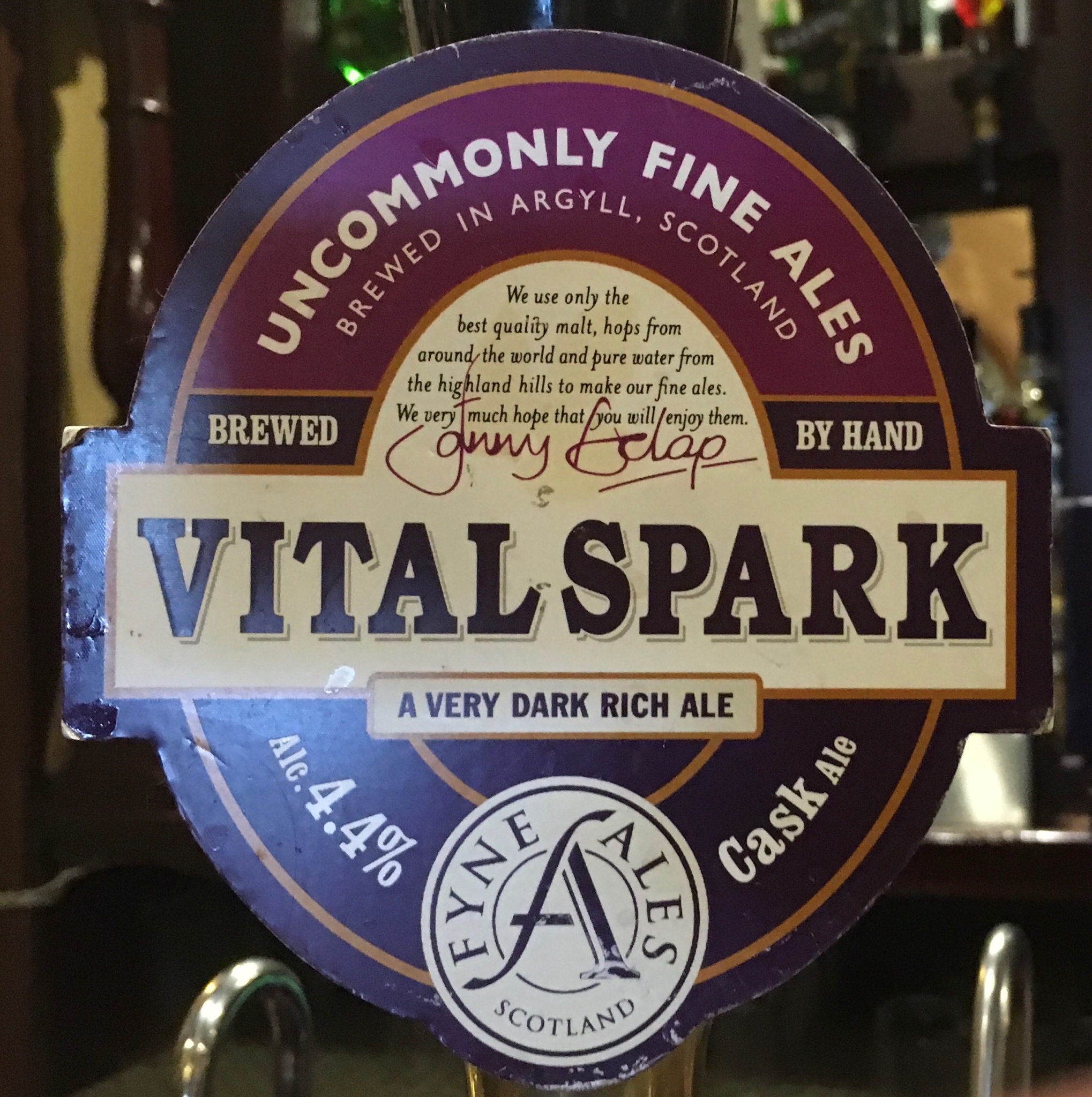
The dark Scottish ale was excellent, with strong distinctive hop flavor and a lot of body. I liked it better than the Guiness I had in Ireland. A pint is plenty, and you should not ride off on your bike for a time after having one!

Our local pub, The Castle Tavern.
[vc_video link=”https://vimeo.com/171457573″]
The Inverness local bagpipe group practicing in front of Inverness Castle. A most improbably instrument, the bagpipe. I cannot imagine how it was thought up, maybe something done after several pints of Scottish ale during a long, dark winter?
I think storming Inverness Castle would be a bit easier than the Edinburgh Castle! Just throw some rocks through the windows. An earl impolitely refused entry to Mary (‘Queen of Scots’) and later she responded by having him hanged. That’ll teach’m servility.
Posting here is fun, but it’s more fun to get out and about.

Leave a Reply
You must be logged in to post a comment.